#science notes
Text
Subfields in Astronomy
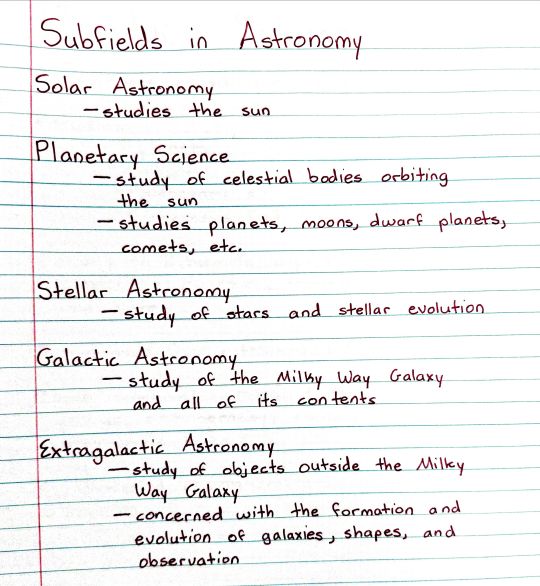
Patreon
#studyblr#notes#astronomy#astronomy notes#astrophysics#astrophysics notes#astronomy fields#fields in astronomy#subfields in astronomy#astronomy subfields#space science#science#science notes#scienceblr
46 notes
·
View notes
Text
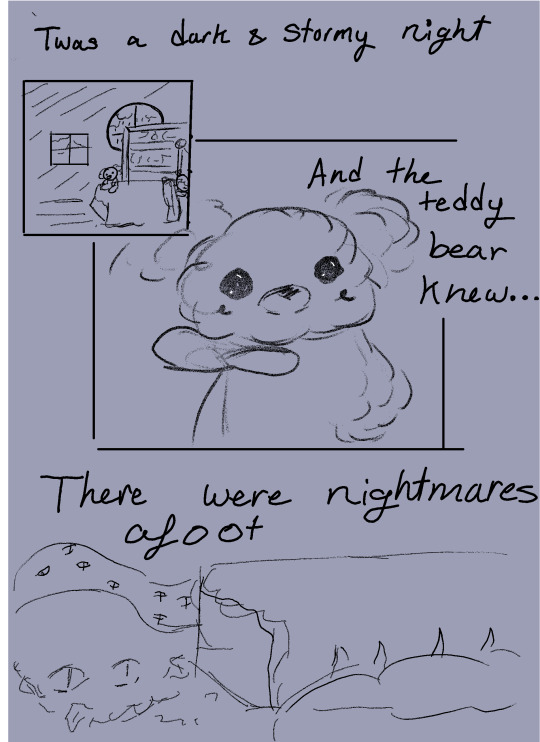

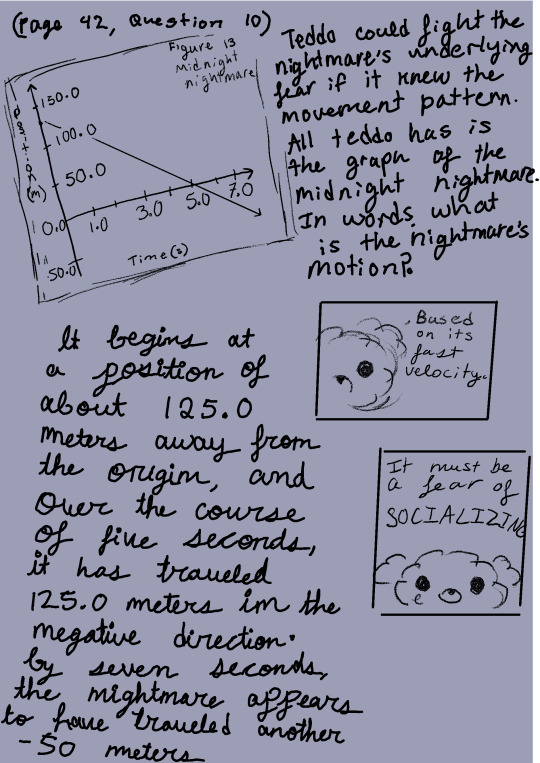

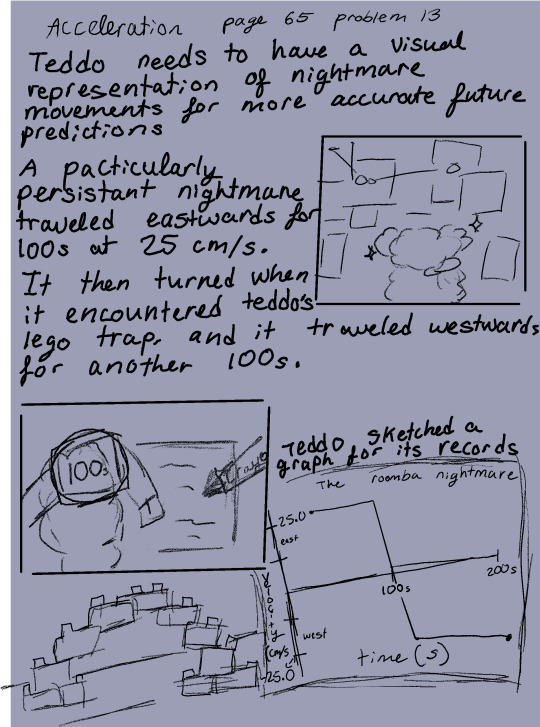



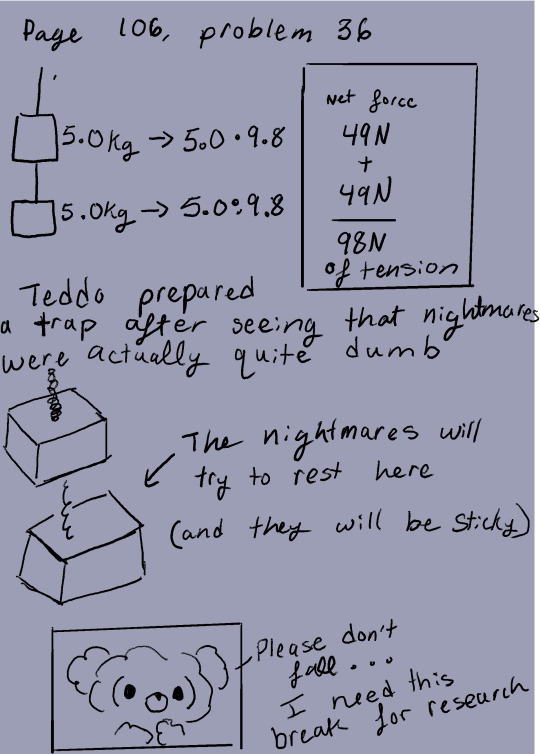

I needed some motivation to do my physics assignment, hence teddo the nightmare warrior.
20 notes
·
View notes
Text



some art and doodles in my science notes!! ^^
12 notes
·
View notes
Text
Crash Course Anatomy & Physiology Notes
Part 1, Introduction to Anatomy & Physiology
"Every movement you make, and every new day that you live to see, is the result of a collection of systems working together to function properly."
anatomy act provided corpses from those that were executed
complementary of structure - basic idea that what a structure can do depends on its form
chemical > cellular > tissues > organs > organ systems > the body
the body is the highest level of organization, while chemical is the lowest level
homeostasis - the ability to maintain stable, internal conditions no matter what changes are occurring outside the body
everyone's ultimate cause of death is the extreme and irreversible loss of homeostasis
loss of homeostasis is the cause of most injuries
anatomical position - body is erect and facing forward, with arms at the sides and palms forward
standing upright
head and eyes directed straight ahead
upper limbs at the sides
upper limbs slightly away from the trunk
palms facing forward
thumbs pointing away from body
lower limbs parallel
feet flat on the ground and facing forward
the body's anatomy is split into different planes
sagittal (median) plane comes down vertically and divides a body or organ in left and right parts, plane parallel is called the parasagittal
coronal (frontal) plane splits everything vertically into front and back
transverse (horizontal) plane divides the body top and bottom
axial parts - everything in line with the center of the body, the head, neck, and trunk
appendicular parts - arms, legs, and appendages
anterior (ventral) - everything at the front of your body
posterior (dorsal) - everything at the back of your body
superior (cranial) - features towards the top of the body, like the head
inferior (caudal) - features towards the bottom of the body
structures toward the midline of your body are medial, and structures further away from the midline are lateral
proximal - areas closer towards the center of the trunk
distal - areas further from the trunk
#crash course#hank green#crash course anatomy and physiology#anatomy and physiology#a&p#notes#science#science notes#homework help#a&p notes#homework#anatomy#anatomy notes#katwthlove#crash course notes#introduction#intro notes#school#student notes#student help#john green#interesting stuff
43 notes
·
View notes
Text

He's really just trying to take notes on this fascinating species and said species keeps hekking with him-
ah well at least he got a few notes?

3 notes
·
View notes
Text

POV
I’m in South Memphis at my favorite stump, in the blackest park. Smoking my blunt, reading my phytoextraction notes and tarot. Then I moved to the lake side between 2 trees to sun bathe.
Spring is here. 🌿
#memphis#notes#leather journal#cotton paper#science notes#phytoremediation#zinnia#bookmark#smoke blunts#nature#agender#g2b#queerplatonic
5 notes
·
View notes
Text



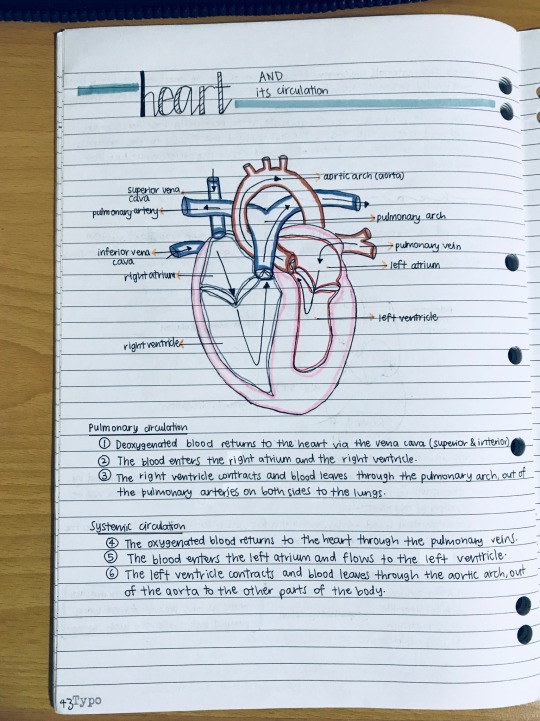
03.05.22 // dop 4/100
was flipping through some of my really old study notes that i’d made when i was still in secondary school, and i was kind of amazed at how much time i had to make such pretty notes. by the time i got to jc it was just ugly scribbles on whatever scrap paper i could get my hands on.
managed to work on more korean workbook practice today, and gave more tuition classes! (i love money) what was especially nice about today was getting dinner and ice cream with an old friend — that’s always a blessing.
listening to: mona lisa, mxmtoon
#studyblr#beauty#studyspo#originals#100 dop#study aesthetic#studyspiration#studystudystudy#studysthetics#study#study motivation#study spaces#study inspiration#studysmart#studystuff#study notes#science notes#science#science aesthetic#paris#paris aesthetic#art#paintings#myhoneststudyblr#study music#100 dop challenge
17 notes
·
View notes
Text

ACES!!! Look at this Scientific American article!!! It makes me genuinely so happy to read. We’re making it!!!!
https://www.scientificamerican.com/article/asexuality-is-finally-breaking-free-from-medical-stigma/
#asexual#demisexual#ace pride#queer#lgbtq#aromantic#aroace#GUYS READ IT PLEASE IM SO HAPPY!!!#update y’all check notes for the time traveling! I’m very honored ppl think I’m some ace time traveling god though. just for science article
34K notes
·
View notes
Text
THINGS IN A CELL MEMBRANE
There’s certainly several things
Killing myself with hammers 300x
Phospholipid bilayer: makes up the bulk of the membrane. Made of lipids with a polar head and a nonpolar tail. The nonpolar side goes on the inside, the polar side goes on the outside
Cholesterol: is a spacer between phospholipids, keeps them from being too compact in cold temperatures and from drifting apart in hot temperatures.
Prehiphral proteins: on exterior of membrane. Can be enzymes or attach to cytoskeleton for maintaining cell shape.
Integral proteins: go through the membrane. Usually transport molecules like a channel when they can’t go through the phospholipid bilayer
Both proteins can have carbohydrates balance them, making them a glycoprotein. If the carbs attach to a lipid it’s called a glycolipid. These identify the cell as “self” and “non-self” which is important for fighting pathogens.
Source: amoeba sisters “inside the cell membrane”
1 note
·
View note
Text
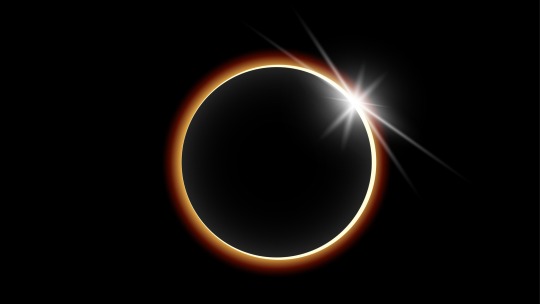

(NEW UPDATE WITH PHOTOS) Send us your best photos!
Absolutely beautiful! I hope everyone took this in! Makes you think just how small we are. A moment the world comes together as one! That’s true humanity . We will be uploading more amazing photos to this same post. So come back later on and check out our 2024 once in a lifetime eclipse photos.

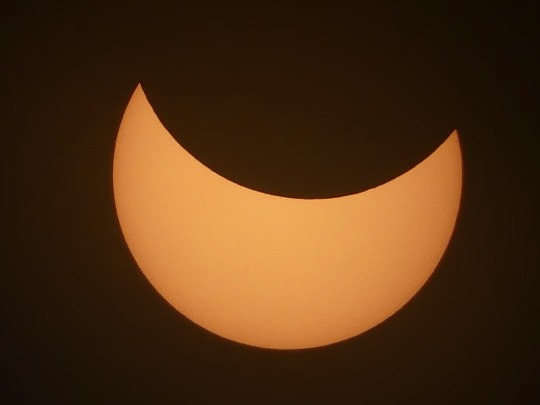
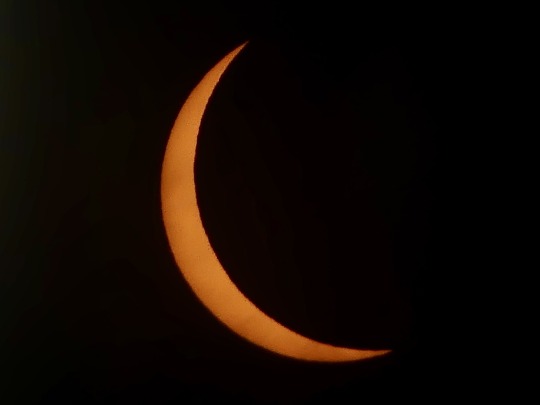




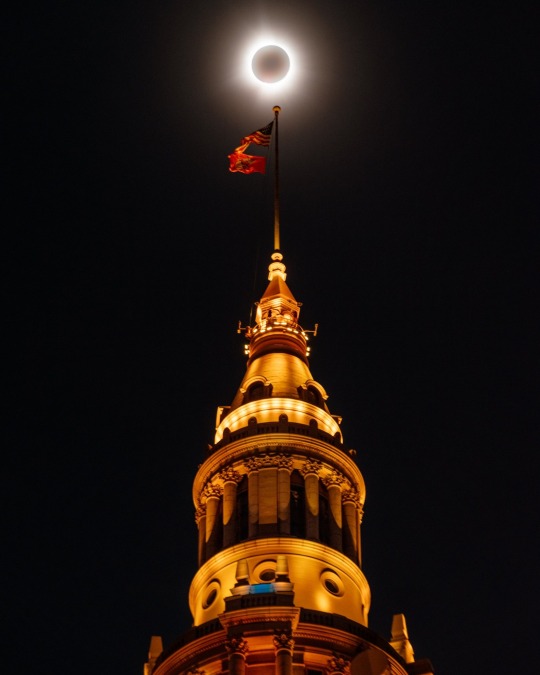
#solar eclipse#eclipse 2024#2024#astronomy#astronomers#nasa#universe#astrophotography#nasa photos#astrophysics#outer space#nasawebb#hubble space telescope#i love astronomy#astronomy facts#astrography#astrobiology#astronauts#astro community#space program#planetary science#planetary nebula#international space station#space exploration#space#science facts#space science#sci#astro notes#astro observations
6K notes
·
View notes
Text
Domain of A Rational Function
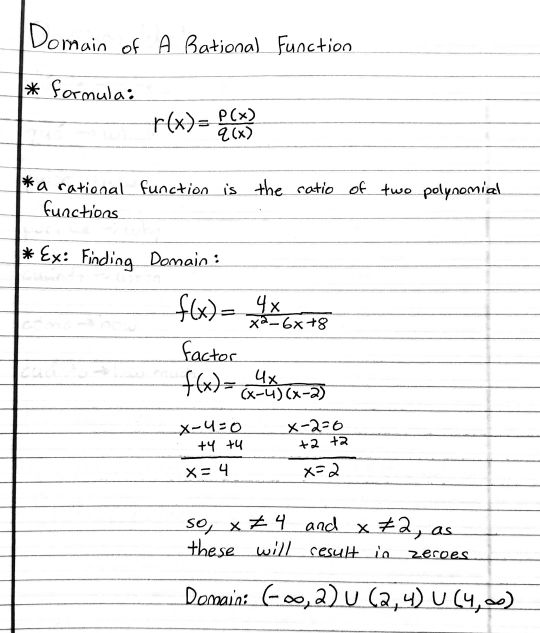
#studyblr#notes#my notes#math#maths#math notes#maths notes#physics#science#science notes#scienceblr#mathblr
29 notes
·
View notes
Text

HAVE SOME NOTES THAT ARE LEGIBLE AND NOT STORY-FIED /Lighthearted
(This took me so long why)
ALso also, delinquent enzyme witches will come... eventually
#biology#science#science notes#biology notes#biology explained#DNA#proteins#high school#AP classes#the ap bio witches
4 notes
·
View notes
Text
Science Part 3
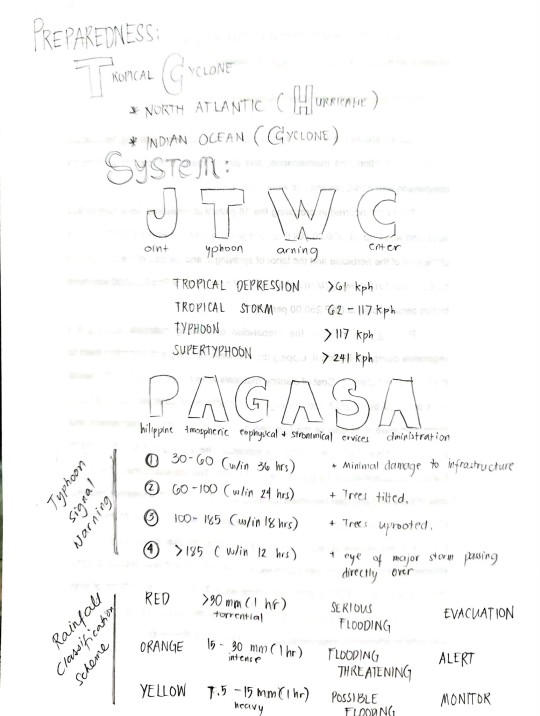

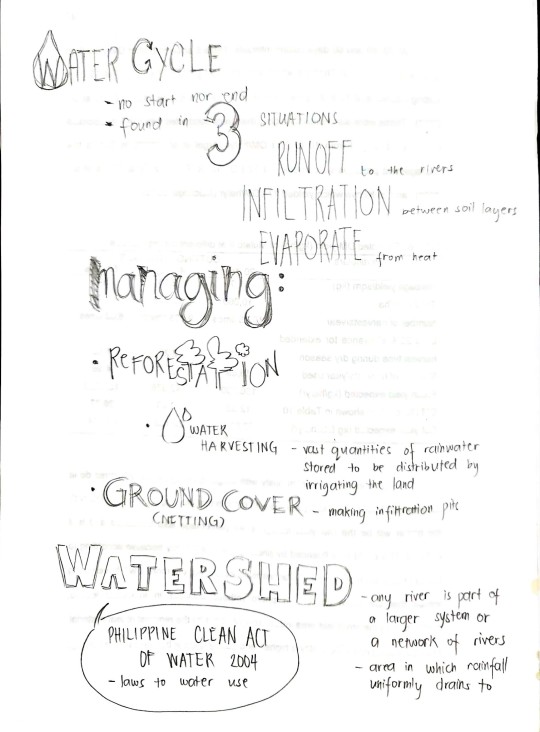



0 notes
Text
Crash Course Anatomy & Physiology Notes, Tissues, Part 1
every cell in the body has its own specific job related to maintaining homeostasis
cells are the most basic building blocks in the hierarchy of complex structures
tissues are the fabric of the body
when 2 or more tissues combine, they form organs
type of tissue defines its function
there are 4 primary tissues
nervous tissue provides control and communication
muscle tissue gives movement
epithelial tissue lines the body cavities and organs and cover and protect the body
connective tissue provides support
histology - the study of tissues
carmine - a red dye derived from the scales of crushed-up cochineal insects, used to highlight different cell structures
nervous tissue forms the nervous system which regulates and controls the body's functions
nervous tissue senses stimuli and sends electrical impulses through the body in response to those stimuli
nervous tissue is made up of two types of neurons and glial cells
neurons sense stimuli and send messages to your brain
neurons are made up of the cell body (soma), dendrites, and the axon
cell body (soma) is the cell's life support, it has all the necessary parts like a nucleus, mitochondria, and DNA
dendrites are bushy and look like the trees that they're named after, they collect signals from other cells to send back to the soma
axon is long and rope-like, it's the transmission cable and it carries messages to other neurons and muscles and glands
glial cells provide support, insulation, protection and tether to blood vessels
muscle tissues can contract and move
the three types of muscle tissue are skeletal, cardiac, and smooth
skeletal muscle tissue attaches to all the bones in your skeleton, it pulls on the bones or skin when they contact to make your body move
skeletal tissue is made up of multinucleate and striations
cardiac muscle tissue cells are generally uninucleate meaning one nucleus, have striations
smooth muscle tissue lines the walls of the blood vessels and hollow organs, don't have striations
#science#science notes#anatomy#crash course anatomy and physiology#anatomy and physiology#anatomy notes#crash course notes#crash course#hank green#tissues#tissues notes#as promised#sorry not really sorry#cool science
31 notes
·
View notes
Text
0 notes
Photo

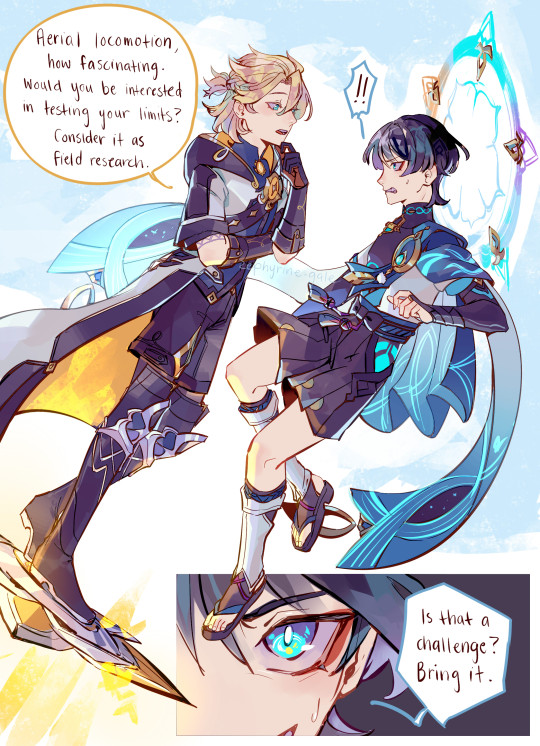
thinking about scaramouche team dynamics ft scarabedo
#genshin impact#albedo#scaramouche#wanderer#my art#two artificial humans??? interacting??#i need it rn mihoyo pls give me their interaction#one can create things with the power of science and the other was created to be a powerful vessel#i wonder if albedo would be able to create a beating heart...#i think albedo would be curious abt scara since they are kind of similar#scara probably hates the word experiment and research (esp when done to him) though#so that's a learning curve they'd have to get over#EDIT: OMG I FORGOT ALBEDOS NECK MARK#I EVEN WROTE IT IN MY NOTES YSTD............
27K notes
·
View notes